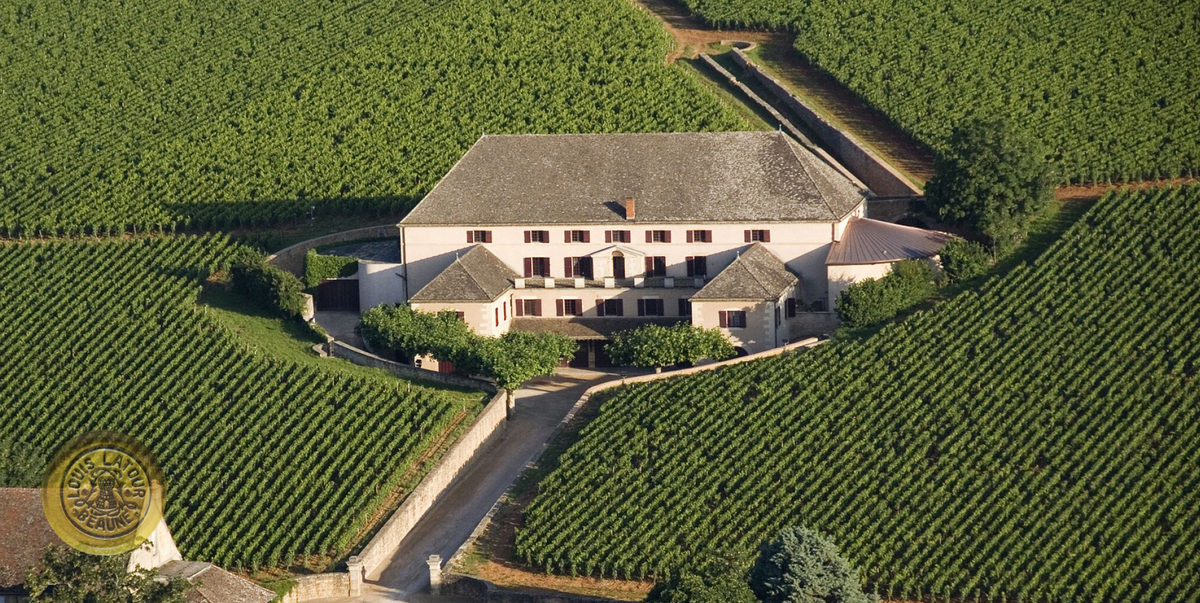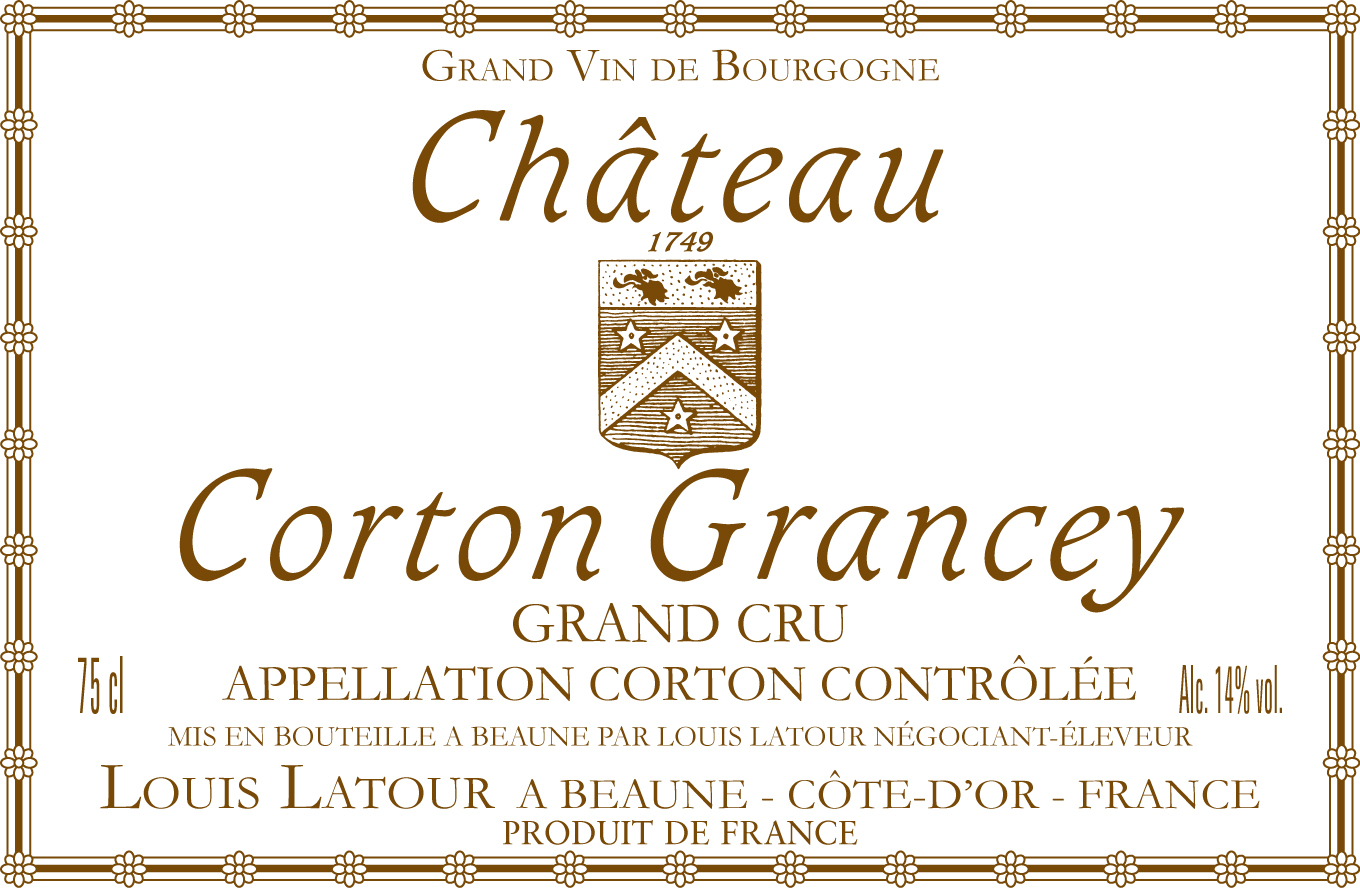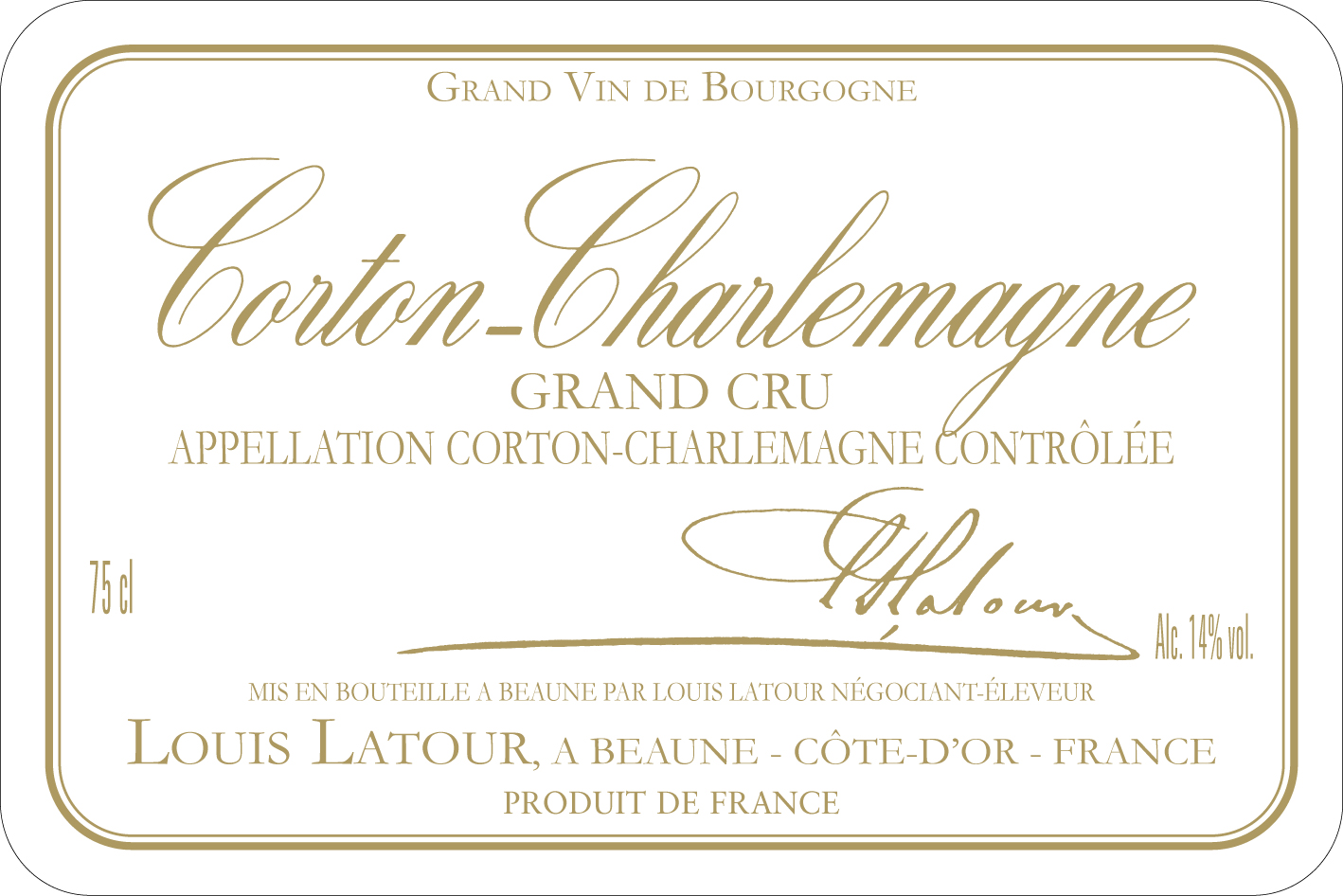

Louis Latour
18, rue des Tonneliers,
21200 BEAUNE
Tél : +33 (0)3 80 24 81 00
Established in the Côte de Beaune region since 1731, Louis Latour invested in the wine trade by founding Maison Louis Latour in 1797. Over the course of more than two hundred and twenty years, he has built up a fine winegrowing heritage in Burgundy. Renowned for its great white wines from the most prestigious appellations, and its famous Corton Grancey red wine from Château Corton Grancey, which it acquired in 1891, Maison Louis Latour - which has remained in the family for 11 generations of Latours - has also established itself in Chablis, Beaujolais, Ardèche and Var.
The Latour family has been called Louis from father to son for over two hundred years. A tradition that continued until Louis-Fabrice Latour took over the helm of the family business from 1999 until his untimely death in September 2022. Historically, the Latour family was in the cooperage business, a trade they still practice, producing between 3,000 and 3,500 barrels a year at their Clos Chameroy site, some of which are exported abroad for prestigious brands.
In 1731, Denis Latour bought a few vineyards in Burgundy's Côte de Beaune region. His descendant, Jean Latour, who set up his cooperage in Aloxe Corton in 1768 at the foot of the Corton mountain, also bought several parcels of vines in the Corton Bressandes and Aloxe-Corton Les Chaillots AOCIt wasn't until 1797 that Maison Louis Latour was officially founded.While producing its own wines over the generations, from 1815 onwards the company developed new markets abroad, notably in Great Britain. In 1830, under the impetus of the 3rd Louis Latour, Maison Louis Latour set up a new winery in Aloxe-Corton and officially began trading. At the time, selling wine directly was not a matter of course, and many winegrowers preferred to sell their grapes or go through intermediaries. At the time, Louis Latour's trading adventure was quite unprecedented. A little later, in 1860, when the vineyard was just 10 hectares in size, export sales intensified, with sales to Belgium, Argentina and the United States. It was at this time that the brand's reputation began to grow, with the aristocracy such as the Radziwill princes, the Bavarian court and the King of Württemberg showing a strong interest in Maison Louis Latour wines. From 1867, when the family moved from Aloxe-Corton (because it was a little cramped) to Beaune, the producer/negociant increased sales of his wines, preferring to sell them in bottles rather than barrels. At a time when business was booming, the family took the opportunity to acquire the prestigious Lamarosse trading house in Beaune. It was also during this period that new winemaking and ageing methods were tested.
In 1891, Maison Louis Latour acquired a prestigious old property and winery (dating back to 1834 on the initiative of the Marquis de Cordoue, who bequeathed it to the Comte de Grancey) : that of Château Corton Grancey. This acquisition also enabled the company to increase its vineyard holdings by 33 hectares. It was also at this time, after the terrible phylloxera crisis, that Louis Latour's fifth representative replanted Chardonnay instead of Aligoté, which had been too badly affected by phylloxera. Then, in 1900, Louis Latour acquired plots of land in Côte de Nuits with vines in Romanée Saint-Vivant and Chambertin, then in Côte de Beaune with a Grand Cru in Chevalier-Montrachet. 1979 marked a specific turning point, as the company invested for the first time outside Burgundy, in the Ardèche region, planting parcels of Chardonnay.

Louis-Fabrice Latour represents the eleventh generation. Father of four, a native of Beaune and educated at Sciences Po Paris, this seventh Louis took the helm of the famous family business in 1999 (he had joined in 1989 at the age of 24) as Chairman of the Management Board, with the intention of preserving the long tradition of the Latour family, while bringing the business of wine merchant and winemaker into the modern era, and paying particular attention to organic vineyard management. Brilliant, a man of conviction, attentive to the needs of his teams and the winegrowers from whom the company sources its products, Louis-Fabrice Latour is also deeply involved in the wine industry, to which Burgundy owes a great deal. From 2003 to 2014, he presided over the FNEB (Greater Burgundy wine merchants' and growers' union), then from 2011 to 2014, the FEVS (Federation of Wine and Spirits Exporters), and finally from 2013 to 2021, the BIVB (Bureau Interprofessionnel des Vins de Bourgogne). Finally, along with others, he will support the Climats de Bourgogne application for UNESCO World Heritage status. Sadly, at the age of 58, he died prematurely on September 5, 2022 after a long illness. Burgundy, deeply touched and moved by his departure, mourns a man of conviction, committed on all fronts, with a strong involvement in the defense and promotion of Burgundy wines, having contributed to the influence of Burgundy in France and abroad.
His brother, Florent Latour, took over the reins of the House in December 2022, with the firm intention of continuing in the footsteps of his brother. A native of Beaune, this HEC graduate with an MBA from Harvard Business School is also part of the Maison Bourguignonne's long tradition of sublimating the finest terroirs, with an unwavering commitment to the winegrowers from whom the négociant-éleveur sources its wines.
Producing around 7,000,000 bottles a year and owning nearly 50 hectares (40 of which are devoted to reds and 10 to whites), Maison Louis Latour is a major player in Burgundy. With 10 hectares in Corton-Charlemagne and 17 hectares in Corton (red), complemented by vines in Gevrey-Chambertin, Vosne-Romanée and Puligny-Montrachet “Les Referts”, Louis Latour is the largest Grand Cru estate in Côte d'Or and one of Burgundy's leading producers of Premiers Crus and Grands Crus. Stretching from Chevalier-Montrachet in the south of the Côte de Beaune to Chambertin in the north of the Côte de Nuits, via the village of Aloxe-Corton, the family's birthplace since its beginnings as a winegrower, Maison Louis Latour knows its vines inside out, harvesting them by hand to produce the very best. In Corton, set into the Corton hillside, the winery purchased in 1832 is worth a visit, with its historic installations. Corton Grancey is where the House vinifies and ages all its red and white wines, which are part of its own vineyard estate. The company also turned its attention to Chablis, acquiring in 2003 the fine Simonnet-Febvre winery founded in 1840 to produce dazzling Chablis, then to Beaujolais (Henry Fessy in 2008), Ardèche (late 70s), and finally Var (late 80s), producing Chardonnay and Pinot Noir, its core expertise in these two grape varieties.
Among the vast range of top-quality wines produced by Louis Latour, two stand out as exemplary in terms of renown, depth and complexity, and perfectly embody the House's exacting standards and expertise. On the one hand, the famous Corton Grancey, a complex, elegant Pinot Noir produced only in great vintages. On the other hand, Corton-Charlemagne stretches along the southern slope of the hillside, just a stone's throw from Ladoix and Pernand-Vergelesses. The terroir, with its steep, well-drained soils (we're on the famous Corton hill), is dominated by limestone: the Chardonnay here is fabulous.

The wine is made from grapes from five different climates (Bressandes, Perrières, Grèves, Clos du Roi and Chaumes). The vines, on average 40 years old, are planted on marl and limestone soils. Aged for 10 to 12 months in French oak barrels (20% of which are new) directly from the Louis Latour cooperage, Louis Latour being the original cooper. Only the best barrels are used in the blending of this great Corton. The vintages suitable for producing this great Pinot Noir produce intense, complex wines combining deep cherry and blueberry aromas with hints of mocha and spices. The palate is suave, peppery yet powerful, with perfectly integrated tannins. An excellent wine for laying down.

On this Grand Cru made by Louis Latour, the Chardonnay vines are over 30 years old. Always hand-harvested, this emblematic limestone plot produces wines of elegant smoothness and dazzling aromatic freshness. Corton-Charlemagne has tension on the palate, volume (fatness) and liveliness that give it great balance. The finishes are long and very mineral. It's a slender white that's perfect for laying down in great vintages, for those who like to wait and discover more evolved Chardonnay notes. But opening it in its youth is also a singular experience, even if this wine reveals all its complexity after many years in bottle.A wine of great class.
Dry white wines: 1947, 2008, 2009, 2010, 2014, 2015, 2016, 2017, 2018, 2019, 2020, 2022, 2023
Red wines: 1934, 1959, 1985, 1989, 1990, 2005, 2009, 2010, 2012, 2013, 2014, 2015, 2018, 2019, 2020, 2023

Website under construction
Available Soon